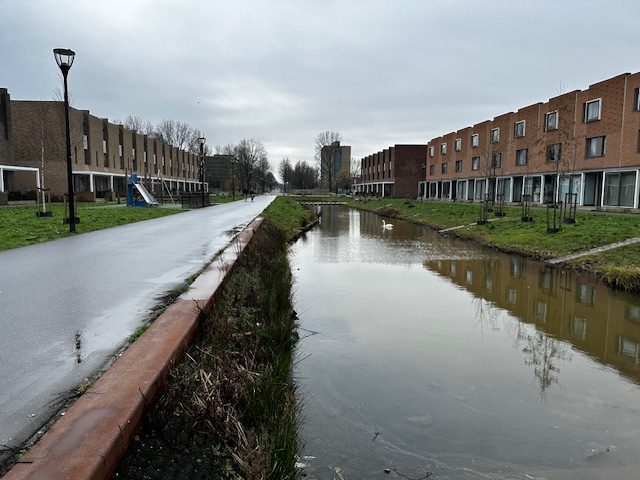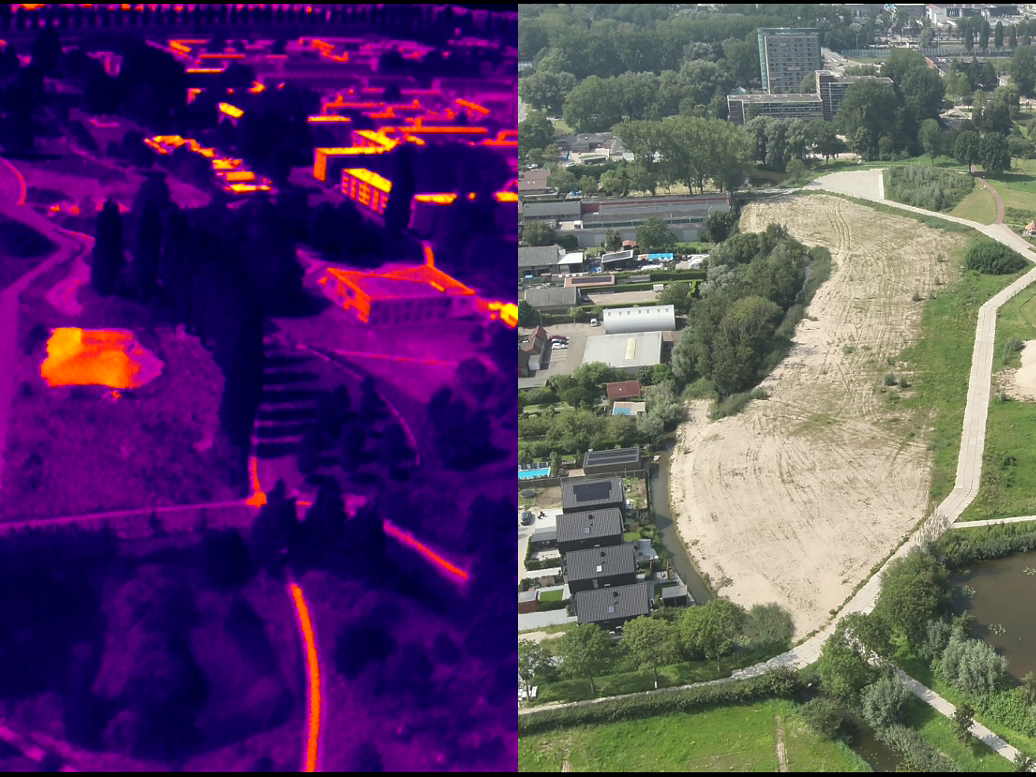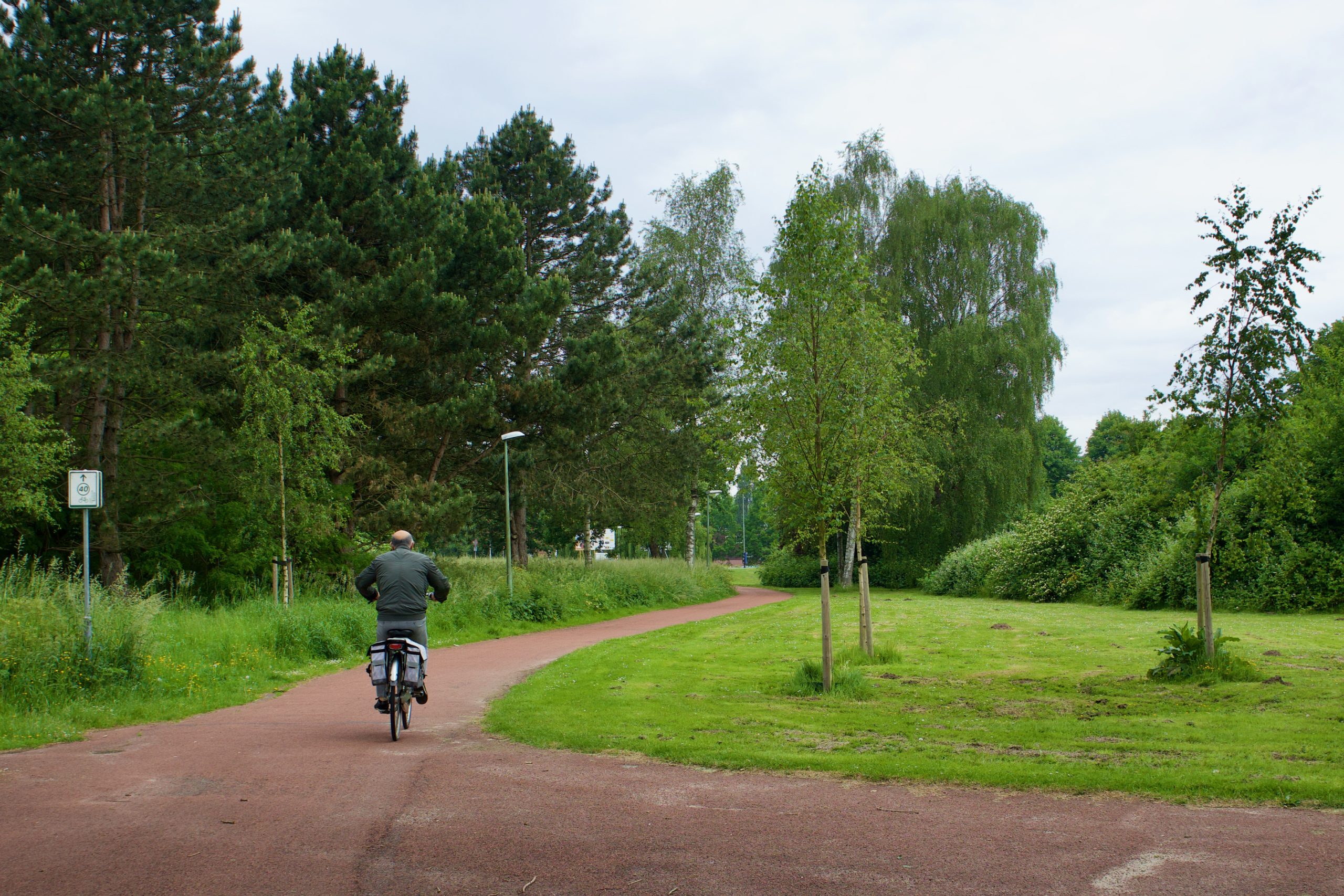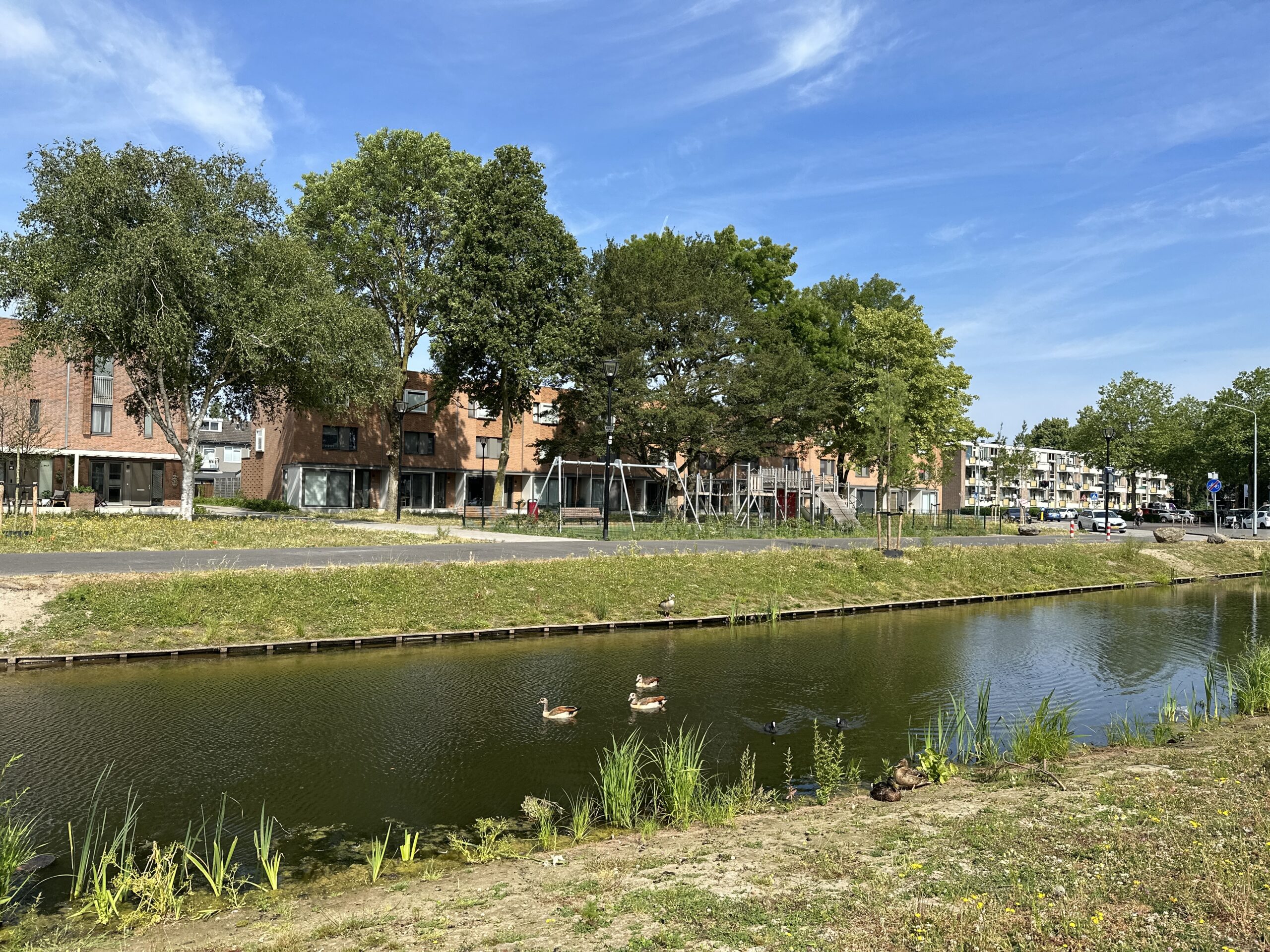Introduction
In Dordrecht, Netherlands, the Wielwijk neighbourhood and its park have been central to pioneering climate adaptation and citizen engagement strategies during the first four years of the LIFE CRITICAL project. The site, which has undergone redevelopment since a community participation initiative in 2006, was selected because of its unique geographic and demographic position.
Challenges
- Wielwijk’s initial design led to significant issues with traffic, air pollution, and water management. A primary concern was Maarten Hapertsz Trompweg, a major road cutting through the neighbourhood. This street led to one of the Netherlands’ busiest highways and generated considerable noise, air pollution, and excessive grey pavement.
- Additionally, Wielwijk Park was often unusable due to severe flooding caused by impermeable surfaces, leading to water accumulation on and around the main road after heavy rainfalls.
- The neighbourhood’s dense construction, vast grey pavement areas, low-quality building materials, and lack of resources for improvement worsened the situation. Such neighbourhoods experience the most severe effects of climate change, making them prime targets for impactful interventions.
Approach
The method focuses on three main principles to build climate resilience in areas where it has the greatest impact:
- Consciously planned blue and green infrastructure (BGI): Implementing blue and green infrastructure is a powerful way for cities to reduce climate impacts. Urban parks and other existing green spaces provide significant opportunities to enhance neighbourhood climate resilience. In densely populated areas, these spaces improve air quality, reduce heat stress, prevent flooding, and promote mental and physical health, making them essential tools for climate adaptation. Moreover, parks offer vital protection from extreme weather, such as heatwaves, especially for vulnerable populations like children, the elderly, and those with lower socio-economic status.
- Community engagement and citizen science: Prioritising citizen involvement in urban climate adaptation is key, particularly in communities that are more susceptible to climate crises. Engaging local residents and stakeholders in climate adaptation initiatives within their neighbourhoods strengthens resilience by enhancing social ties, creating positive community experiences, and increasing climate awareness.
- Monitor, evaluate, learn, and replicate: Effective climate adaptation strategies require continuous impact monitoring. Collecting data over time helps evaluate the success of specific measures and generates valuable insights, such as identifying the best tree species for reducing summer temperatures. This knowledge can then be applied to improve and replicate successful strategies elsewhere.
Climate Impact
The rebuilding of the area within the scope of the LIFE CRITICAL project has focused on achieving four main impacts:

Improved water management and flood prevention
Goal: Manage stormwater effectively and mitigate flooding by securing an additional 11,500 m3 of water storage capacity, and 7,600 additional m2 of permeable pavement in the area.
Expected impact: Reduction in flooding risk by 20% in 2025.
Actions implemented: Harnessing topography in the park, Creating small canals, Improved rainwater drainage and water infiltration
Intermediary results: 2,070 m3 of water storage and 6,450 m2 of permeable pavement were installed at Tromptuinen by October 2023, with expectations of promoting better water infiltration, reducing runoff, and supporting groundwater recharge.

Reduced heatwave peak temperatures
Goal: Mitigate the urban heat island effect by replacing 30,000 m2 of grey pavement with green or permeable pavements.
Expected impact: 0.5°C temperature drop during heatwave.
Actions implemented: Replacing trafficked road with gardens at Tromptuinen
Intermediary results: Newly implemented BGI in Tromptuinen has likely already begun to positively affect temperatures. Baseline monitoring shows lower peak summer temperatures around green infrastructure compared to grey, with the highest measured difference between urban and park sensors at +4.7°C, -10% during a heatwave. Drone surveys with heat cameras captured drastic temperature variations between green spaces and pavement areas, confirming the sensor station results.

Reduce car traffic and alleviate congestion
Goal: Upgrade traffic planning to alleviate congestion, enhance traffic circulation efficiency, improve safety, and mitigate pollution.
Expected impact: Over 10% reduction in urban traffic and improved traffic mitigation efforts to alleviate congestion and enhance overall transportation efficiency, making the city more resilient to future challenges.
Actions implemented: Directing cars to the outskirts of the neighbourhood, traffic management interventions
Intermediary results: In Dordrecht, changed traffic conditions and infrastructure improved traffic handling by noticeably decreasing congestion and increasing road safety.

More access to and use of green areas
Goal: Create 18,300 m2 of new urban green spaces, fostering biodiversity, recreational areas for residents, and improving social safety, particularly for children.
Expected impact: 10% increase in park usage and accessibility.
Actions implemented: Planting for (bio)diversity, variations of green, protecting the old value, engaging newcomers to keep gardens green, cooperation agreements
Intermediary results: An additional 6,450 m2 of green space was created in the Tromptuinen area, connecting homes directly to the green axis and providing easy access to Wielwijk Park.
